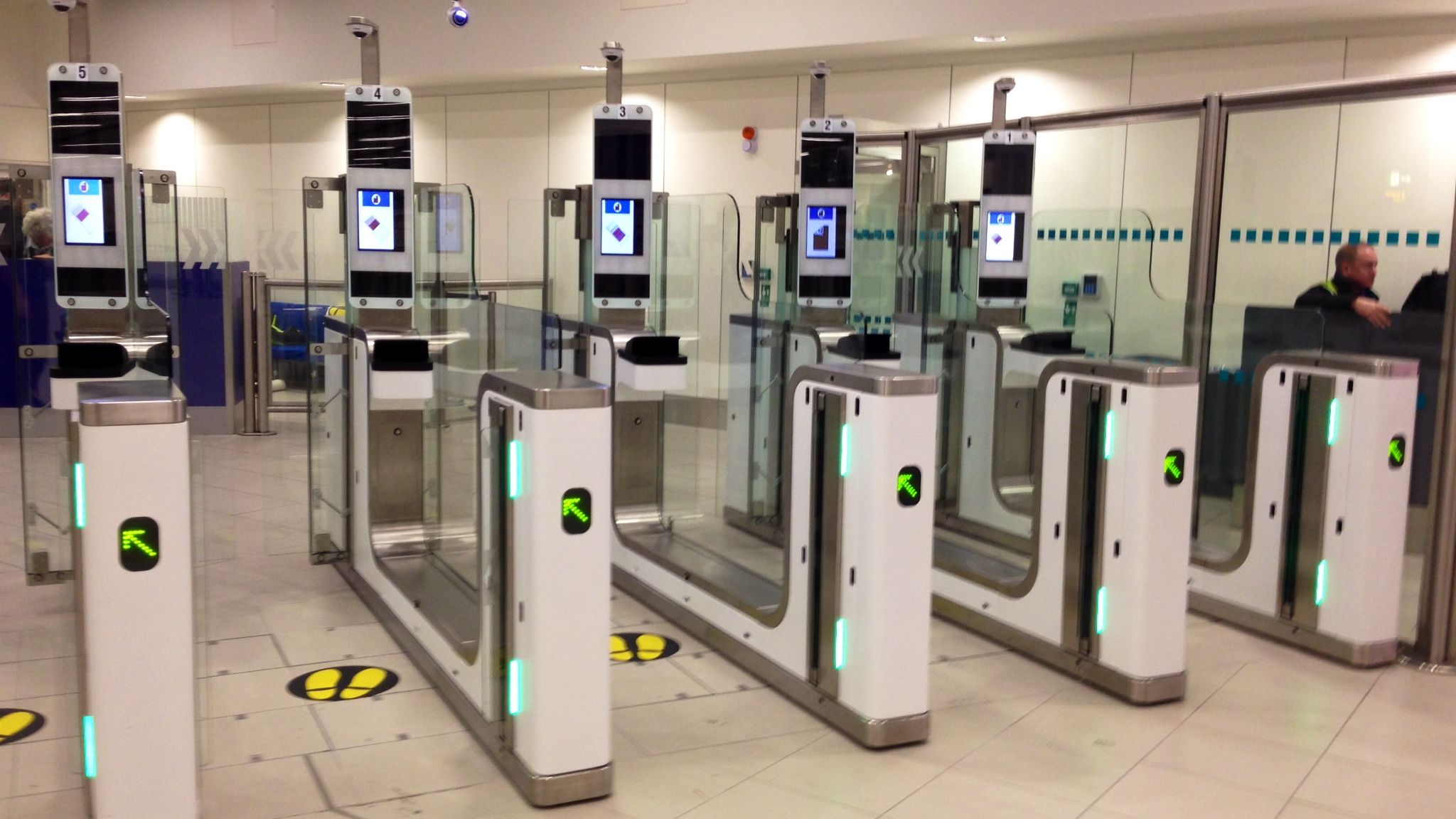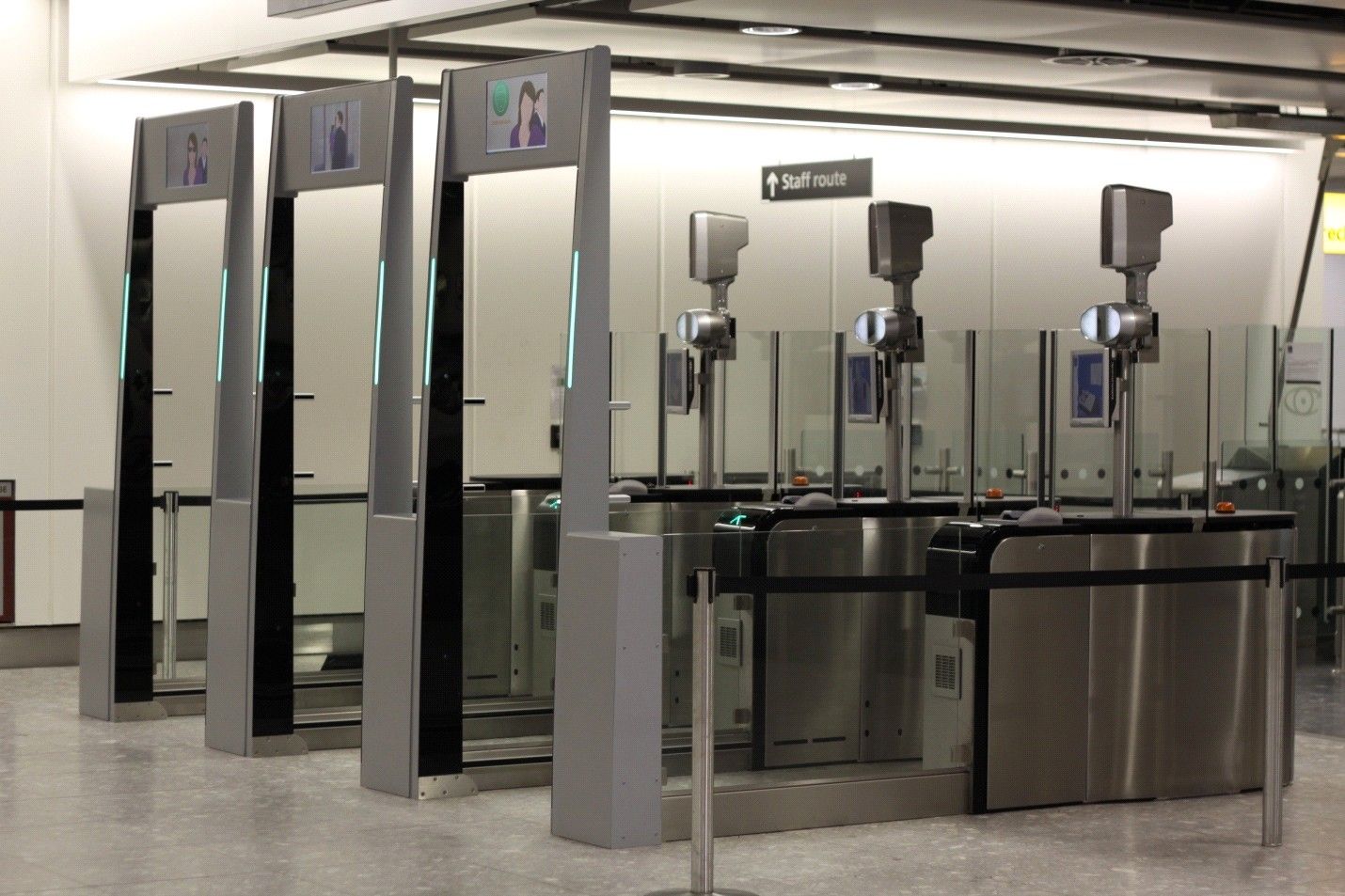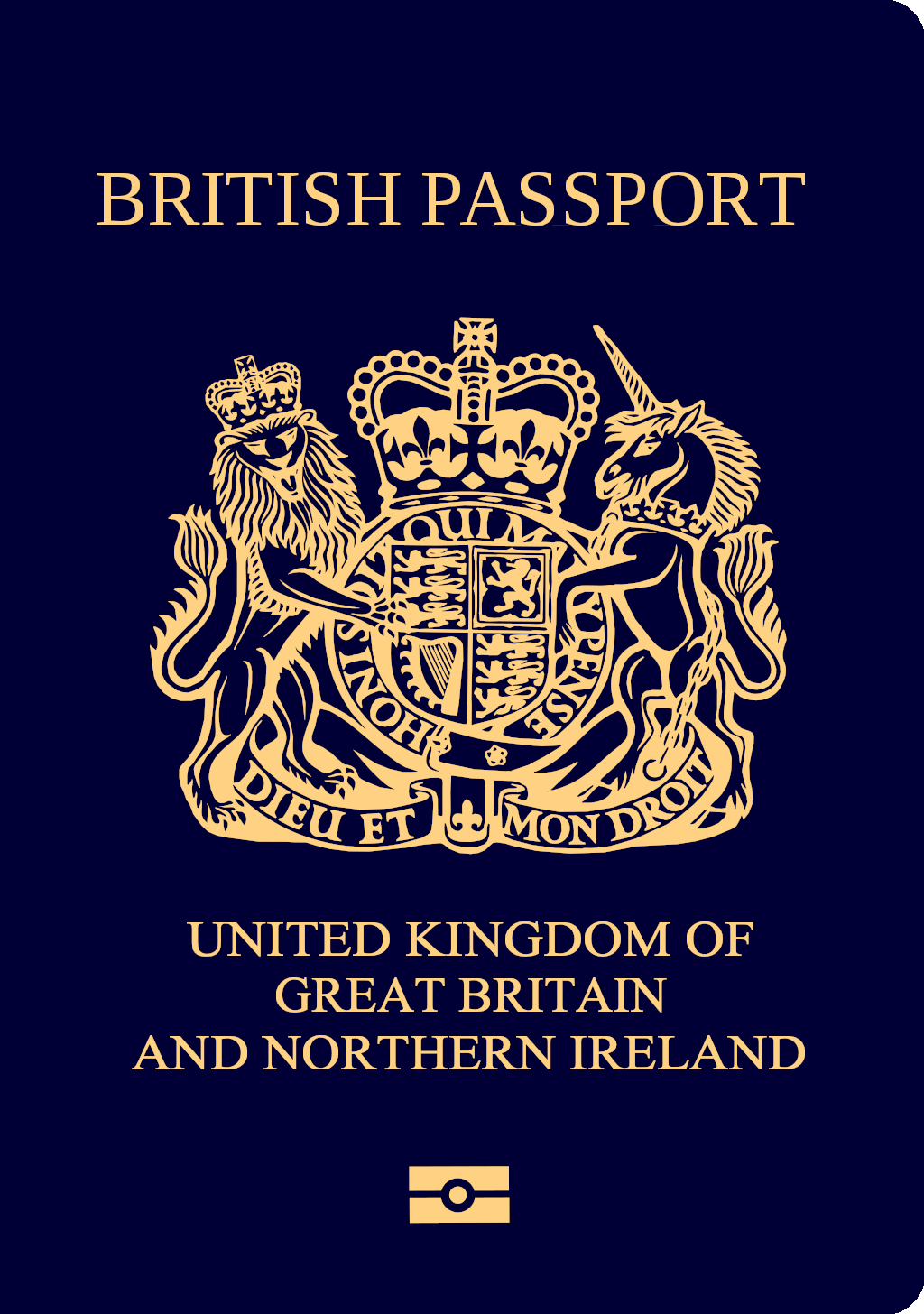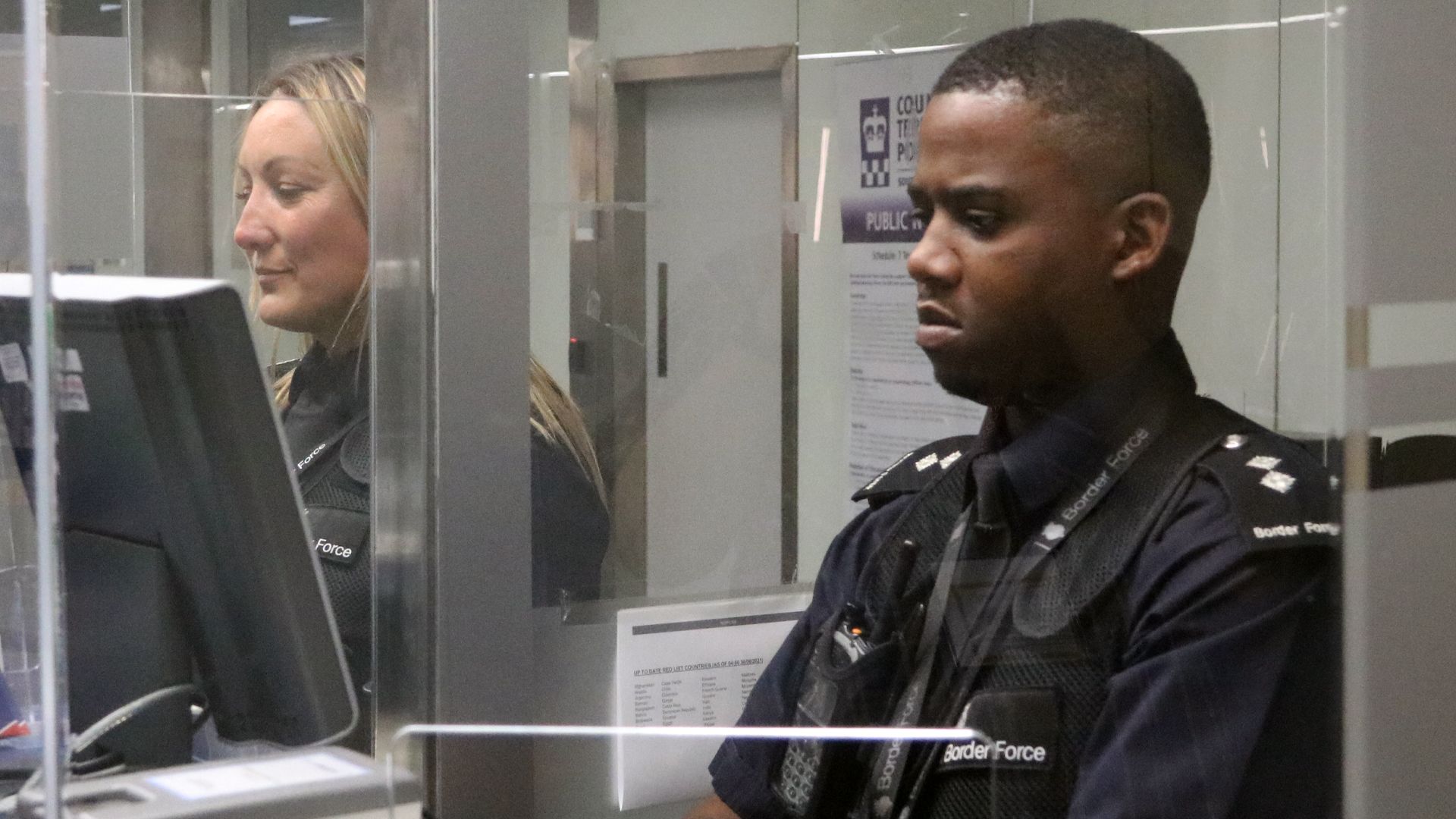First introduced at select UK airports in 2008, ePassport gates enable passengers to pass through UK immigration without requiring the conventional face-to-face with an immigration officer. According to the latest government figures, there are over 270 gates currently installed at 15 air and rail terminals, which includes 13 airports.
The UK has had some tough moments with the technology, most recently during a nationwide system outage in May – however, on the whole, eGates have helped the country maintain an efficient immigration control system and improved the airport experience for arriving international passengers.
What are ePassport gates?
Before discussing the UK’s ePassport gates and who can use them, let’s first look at what they are. Operated by the UK Border Force, ePassport gates are automated self-service barriers located at entry points at UK airports and some railway terminals.
Photo: Home Office
These eGates are a faster alternative to entering the UK than waiting in line to see a Border Force immigration officer. eGates use facial recognition software to verify a person’s identity by scanning your face and matching it with the data stored on a biometric chip in your passport. The information is then run through several databases to assess whether you are a security risk.
There are multiple advantages of implementing ePassport gates, both for passengers and airports:
- Shorter queues for passengers
- More convenient airport experience
- Helps authorities prevent congestion
- Cuts down operational costs
To use the gates, passengers need to place their passport onto the scanner and face a camera, which takes a photograph and then compares it to database information. Ordinarily, each passenger will spend less than 30 seconds to make it through an eGate.
If your passport won’t scan properly, apply some firm pressure with your hand to flatten it, which will help it read better.
Who can use ePassport gates?
If you have a biometric passport, British citizens and people from the European Union (EU), the European Economic Area (EAA), and Switzerland can use the United Kingdom eGates to gain entry into the country. UK ePassport gates do not accept national identity cards or the passports of people from a British Overseas Territory.
Following successful trials at Gatwick, Stansted, and Heathrow, children aged ten or older can use ePassport gates too. Previously, the minimum age was 12, but with an increase of people traveling abroad this summer on holiday, the UK government has lowered the age for eGate use.
People from select non-EU countries can use eGates too
In May 2019, the United Kingdom started letting people from the following countries use eGates for entry into the UK for six months, providing they have a biometric passport:
- Australia
- Canada
- Japan
- New Zealand
- Singapore
- South Korea
- United States
While most people have no issues entering the UK through an ePassport gate, there are times when you will be required to present your passport to a Border Force officer. Some of the reasons for this are:
- To verify that you are the person the travel documents belong to.
- Check to see if you can enter the United Kingdom without a visa.
- To establish your nationality and identity.
You will also have to see a Border Force officer if there is an error with the eGate. This can be because you have not inserted your passport correctly into the reader, your passport’s microchip is damaged, you did not remove your glasses or hat, or you failed to look into the camera as instructed. Also, occasionally, a person’s appearance changes and no longer matches the data stored in the microchip.
Photo: UK Border Force.
You may be required to see a Border Force officer if you are traveling with children so that they can determine the relationship between you and the children. This is done to help safeguard the welfare of children entering the UK. From time to time, the UK Border Force may suspend the use of eGates for flights arriving from certain countries.
Which airports and railway stations have ePassport gates?
Currently, ePassport gates can be found at the following UK ports of entry (13 airports and two railway stations):
- Birmingham Airport (BHX)
- Bristol Airport (BRS)
- Cardiff Airport (CWL)
- East Midlands Airport (EMA)
- Edinburgh Airport (EDI)
- Eurostar Brussels-South Terminal (juxtaposed controls)
- Eurostar Paris Nord Terminal (juxtaposed controls)
- Gatwick Airport (LGW)
- Glasgow Airport (GLA)
- Heathrow Airport (LHR)
- London City Airport (LCY)
- Luton Airport (LTN)
- Manchester Airport (MAN)
- Newcastle Airport (NCL)
- Stansted Airport (STN)
Not a perfect system
As is often the case with relying heavily on IT systems like ePassport gates, things can suddenly go wrong due to technical glitches. We have seen this most recently with the global CrowdStrike IT outage, which caused significant disruption to passengers, airports and airlines in late July.
While the UK’s ePassport gates have undoubtedly enhanced the efficiency of the country’s immigration control, they have encountered their fair share of problems over the years. The most recent problem to hit the system happened on May 7th, 2024, with a “network problem” shutting down eGates at major airports for several hours.
The UK Home Office did very well under the circumstances on that occasion, implementing a contingency plan within minutes and restoring the network by midnight the same day.




